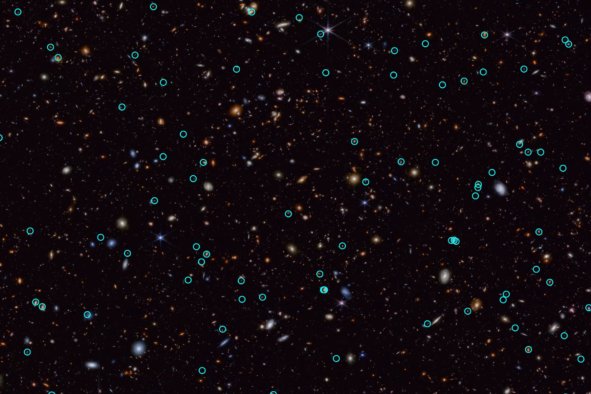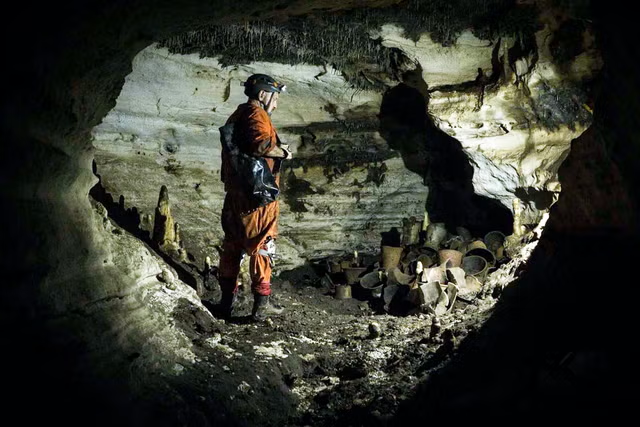Images snapped from space show the spectacular patterns formed by sea ice floating on the ocean currents
The pictures, taken by the Moderate Resolution Imaging Spectroradiometer (MODIS) on NASA's Terra satellite on June 4 this year, show tiny fragments of sea ice drifting on the waves along the coast of Greenland.
The ebbs and flows of the ocean currents seem to have woven the ice into spiral-like patterns, like snowflakes in a blizzard.
The ice is thought to have originated from the Arctic Ocean, having traveled south via the 280-mile-wide Fram Strait to reach the eastern coast of Greenland. It will then have been swept to the south by the East Greenland Current, melting into smaller and smaller fragments as it goes. Some of the smallest chunks in the image may only be tens of feet across.
"The smaller the floes, the more 'wispy' the patterns," Walt Meier, a sea ice scientist at the National Snow and Ice Data Center (NSIDC), said in a NASA Earth Observatory statement.
Winds from the Greenland Ice Sheet then blow the fragments around, forming the spirals shown in the picture.
"With the thinning and breaking up of the ice, it becomes more easily pushed around by the winds and current," Meier said.
There are several types of sea ice, including first-year ice, which forms and melts within a single year, and multiyear ice, which survives through multiple summer melt seasons and is thicker and more resilient. The larger fragments seen in the picture likely formed along the coast near where they are currently seen, having not yet been broken up by the journey.
Recently, less sea ice has been making its way out of the Arctic Ocean along this route due to the effects of climate change, which have made Arctic sea ice thinner.
"Historically, when more of the Arctic sea ice would survive the summer melt season, growing thicker and older, a larger volume of sea ice would be transported through the Fram Strait," Angela Bliss, a sea ice scientist at NASA's Goddard Space Flight Center, said in the NASA statement.
The extent and thickness of sea ice off Greenland have been declining over recent decades due to climate change, contributing to the overall reduction in Arctic sea ice. Rising temperatures are causing more rapid melting of sea ice, leading to longer ice-free periods in summer and delayed freezing in winter.
This reduced flow of sea ice past Greenland may impact ocean circulation patterns that rely on this annual movement, causing knock-on effects across the globe.
"Less ice and freshwater transport have big implications for ocean productivity, as well as warming upper ocean temperatures, in the region," said Bliss.
Do you have a tip on a science story that Newsweek should be covering? Do you have a question about sea ice? Let us know via science@newsweek.com.
Disclaimer: The copyright of this article belongs to the original author. Reposting this article is solely for the purpose of information dissemination and does not constitute any investment advice. If there is any infringement, please contact us immediately. We will make corrections or deletions as necessary. Thank you.



